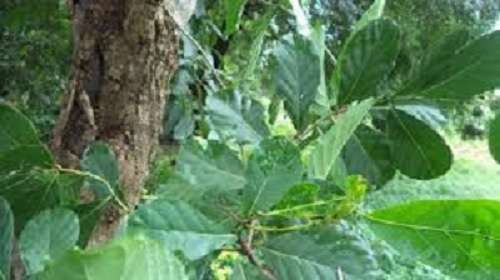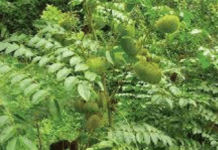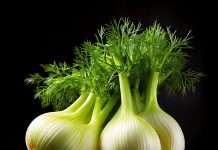
Morinda lucida Benth, from the Rubiaceae family, is a tropical rainforest tree commonly known as the “Brimstone tree.” In Nigeria, it is called oruwo or ruwo in Yoruba, huka or eze-ogu in Igbo, and njisi in Hausa. It is also known as a “nutrient factory.” In Togo, it is referred to as amake or atak ake.
Constituents
Phytochemical analysis of Morinda lucida extracts has revealed the presence of tannins, alkaloids, steroids, saponins, flavonoids, phenols, and anthraquinones. The plant is also rich in vitamins A, K, and E, along with moderate amounts of proximate compounds such as carbohydrates, protein, fat, fibre, ash, and moisture.
Preparations
Morinda lucida is available in various forms, including the whole plant, leaves, stem bark, and roots. The root bark or leaves can be used fresh, pounded, chopped, or boiled. They can also be prepared as decoctions, infusions, or plasters.
Pharmacological actions and medicinal uses
The presence of anthraquinones, steroids, alkaloids, and tannins in Morinda lucida explains its potential in managing ailments such as constipation, heart conditions, malaria, and diarrhoea. It is one of the four most commonly used plants in traditional medicines for treating fevers.
Plant extracts have been reported to show anti-inflammatory, analgesic, antibacterial, anti-malarial, gastric motility, anti-hepatotoxic, vermicidal, antipyretic, anti-thrombotic, antioxidant, and cardio-protective properties. In simpler terms, it detoxifies and protects the liver, kills intestinal worms, reduces fever, prevents blood clots, combats free radicals, and safeguards heart muscles. Additionally, inhibitory effects on cancer tumours in mice have been reported. The richness of the plant in vitamins A and E, two powerful antioxidants, makes it valuable in managing degenerative diseases such as atherosclerosis.
In Central and West Africa, infusions and decoctions of the root, bark, and leaves are used to treat a range of ailments, including trypanosomiasis, diabetes, insomnia, dysentery, cerebral congestion, stomach ache, ulcers, wounds, abscesses, chancres, microbial infections (including leprosy and gonorrhoea), and worm infestations. In South-West Nigeria, a filtrate of macerated fresh leaves in fresh palm wine is used orally to control blood sugar levels in suspected diabetic patients.
The leaf and stem bark are reported to have anti-spermatogenic properties. Additionally, the leaves are used to treat and improve all forms of infertility in women. Locally, the Brimstone tree is also used to treat irregular menstruation, insomnia, jaundice, and fever during childbirth.
Adverse effects
No known adverse effects have been reported for Morinda lucida, even after acute and sub-acute toxicity studies conducted on Wistar rats.
Economic uses and potentials
The wood of Morinda lucida yields yellow to red dyes. In Nigeria, Gabon, and Congo, it is used to dye textiles and baskets scarlet red and pale green, respectively. The bitter roots are used to flavour food and alcoholic beverages, and in Nigeria, they are popular as chewing sticks. The wood is also useful for making charcoal, construction, mining props, furniture, canoes, poles, and fuelwood. Additionally, the leaves are used for cleaning and scouring. There is great potential in the cultivation, processing, sale, and distribution of Morinda lucida and its products.
References
Adeleye O.O., Ayeni O.J., and Ajamu M.A. (2018). Traditional and Medicinal Uses of Morinda lucida. Journal of Medicinal Plants Studies, 6(2): 249-254.
By Pharm. Ngozika Okoye MSc, MPH, FPCPharm
(Nigeria Natural Medicine Development Agency)
Email: ngozikaokoye@yahoo.com











